On the road down from Auribeau to the Calavon Valley, my daughter Aimée and I stopped at Castellet-en-Luberon, a picturesque Provençal village perched amidst the lush landscape of the Grand Luberon.
A quintessential village that seemed authentic enough to be worth the diversions.
And we weren't wrong.
This is a short account of our visit.
Watch this short video on the Luberon!
Plan your trip
- 🛏 Find the best accommodations in the Luberon on Booking.com
- 🚙 Rent a car in Aix-en-Provence or Marseille-Provence Airport
- 🙋♀️ Get the PASS CÔTE D'AZUR and take your pick from more than 100 amazing experiences!
- 🤩 Visit the beautiful Provençal region of Luberon
- 🚐 Join a 6-hour tour of Lourmarin, Bonnieux, Roussillon, and Gordes by air-conditioned minibus
- 🚘 Discover Provence in a 2CV. Stroll along exceptional roads and enjoy a piece of Luberon all to yourself!
- 🥗 Experience a black truffle hunting tour in a Luberon plantation
- 📚 Read the DK Eyewitness Provence and the Côte d’Azur Travel Guide
- 🚻 Public toilets are located at the Rue de l'Ancienne Mairie.
- 🚗 Park at the entrance to the old village: car park at the top of the village, Route d'Auribeau.
- ⚠️ Castellet-en-Luberon should not be confused with Le Castellet, another hilltop village in the Var département near Bandol.
Castellet-en-Luberon: A Discovery Guide
On a radiant October morning, we explored the cobblestoned heart of Castellet-en-Luberon.
As we meandered through the ancient streets, the village unfolded like a well-kept secret, its stone houses and picturesque alleys bathed in the soft autumn light.
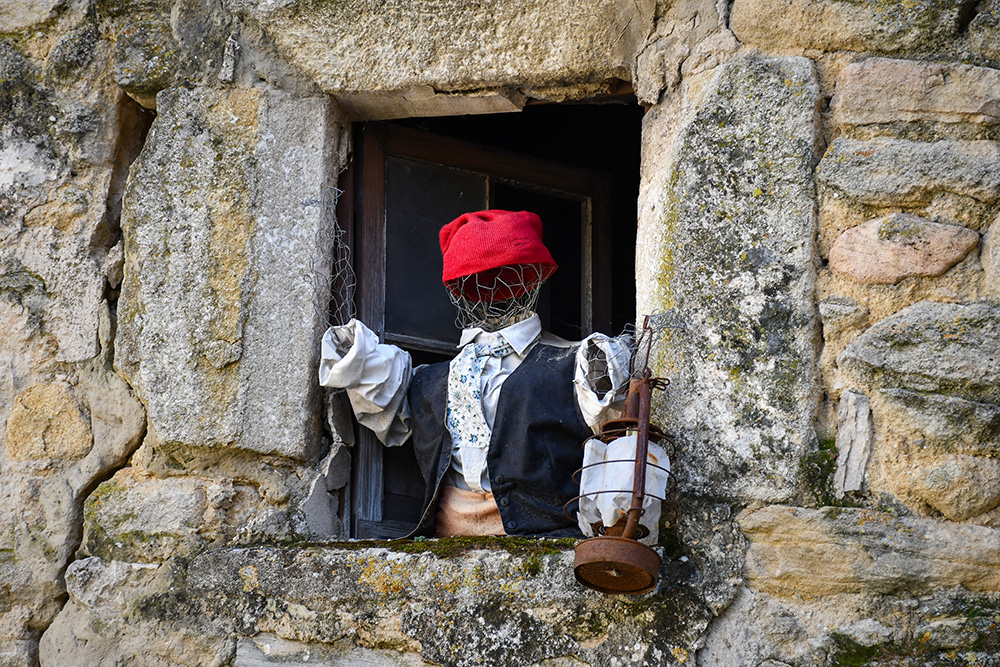
In the village! © French Moments
The serene silence was punctuated only by the footsteps of the local postman, making his rounds in the narrow lanes too quaint for any vehicle, and the occasional mews of cats, seeking a moment's affection from passersby.
Castellet-en-Luberon, with its rich heritage, thriving agriculture, and the warm embrace of its community, offered a timeless snapshot of Provencal life, inviting us to lose ourselves in its tranquil charm.
🎦 Check out my guided walk on YouTube to explore Castellet-en-Luberon with me:
Understanding the Village
Castellet is a mountain village clinging to the northern slope of the Grand Luberon. Its streets weave a maze of steep lanes and old rural houses.
Many houses date back to the 17th and 18th centuries, with some featuring beautiful porches.
The church and the town hall are located on the northern edge of the village, and the Rue César Moulin serves as the main street, leading to two equally picturesque roads: the Rue de la Combe and Rue de la Chatterie, the latter of which leads to the Rue Haute.
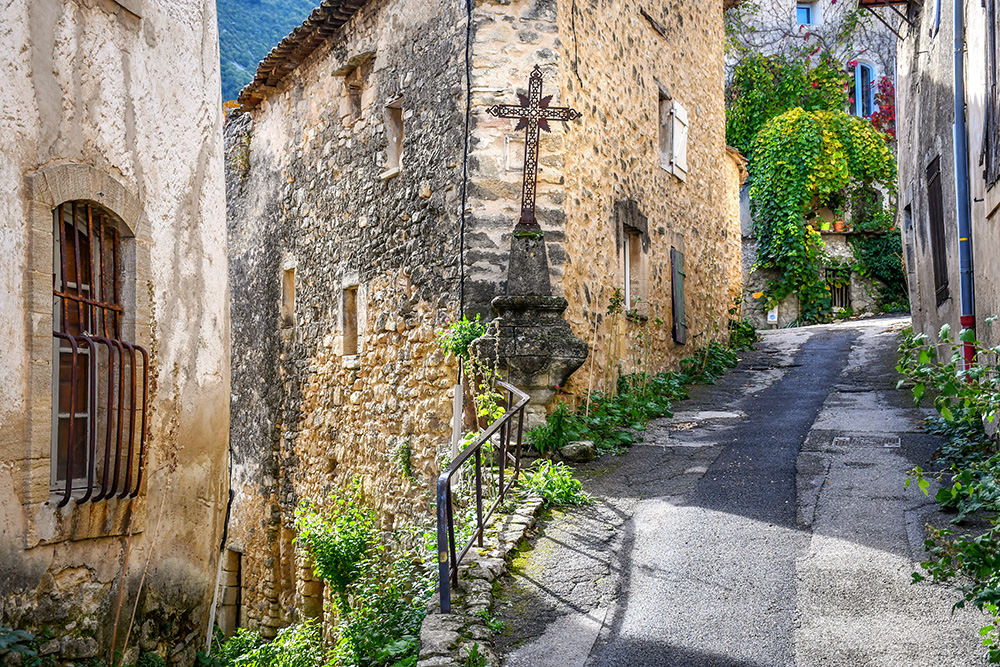
Rue César Moulin in the heart of the village © French Moments
Rue du Barry, a cobblestone path, allows one to reach the car park at the top of Route d’Auribeau from the church at the bottom of the village.
The village sits at an altitude of 449 metres, but it feels higher due to the almost mountainous atmosphere of the village and its dwellings.
Castellet offers beautiful views of the surrounding countryside, especially of the perched village of Saint-Martin-de-Castillon, which faces it from the other side of the Calavon valley.
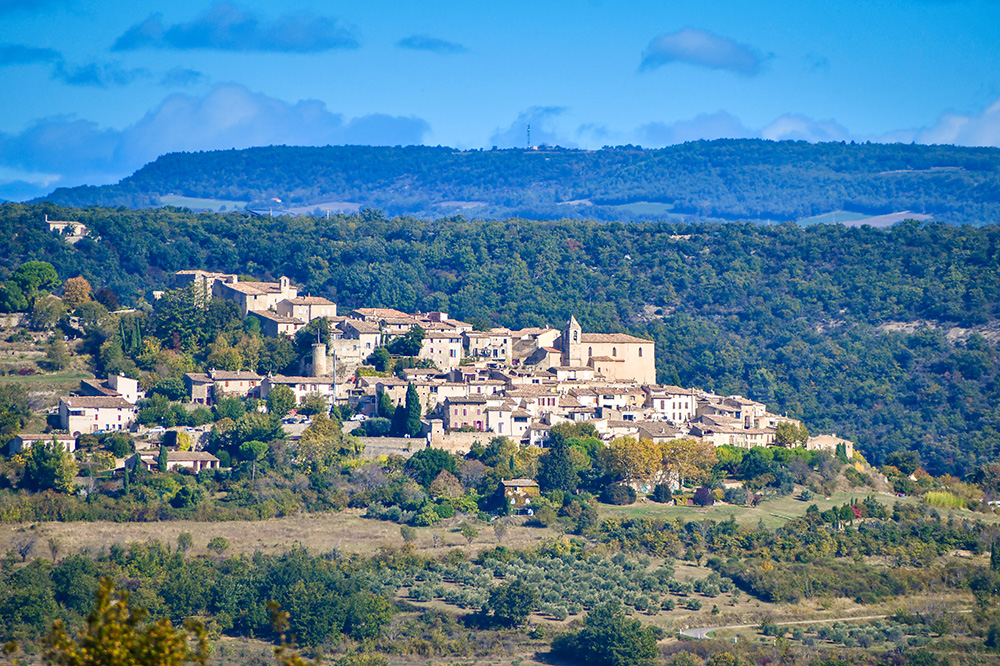
Saint-Martin-de-Castillon © French Moments
Castellet and Auribeau vie for Mourre-Nègre, the highest point of the Luberon mountain range, at 1125 meters altitude. Access to the summit requires a demanding hike of more than 9 km return.
A bit of history
The village's first medieval fortification was due to the Bot family, making it an important fief of the County of Forcalquier.
After numerous power struggles and periods of desertion, the village was finally repopulated in the 15th century by families from Auvergne.
Castellet also experienced a period of growth under Louis XIV, who elevated the fief to a barony for the Brancas family.
A living Village
The main activity in Castellet-en-Luberon is agriculture. Almonds, plums, cherries, and vines are cultivated here.
Olive trees have almost disappeared after the damage caused by the frost in 1956.
Lavender is also essential, allowing a craft distillery to survive in the village.
Of course, the village also lives from tourism, even if Castellet has kept its traditional village aspect, thus avoiding the mass tourism suffered by other villages in Provence.
Rue du Barry
Rue du Barry is a cobbled street leading to the car park at the top of the village on the Route d'Auribeau at the church. It is lined with old houses, some of which have been renovated while others have kept their original character.

The calade of Rue du Barry © French Moments
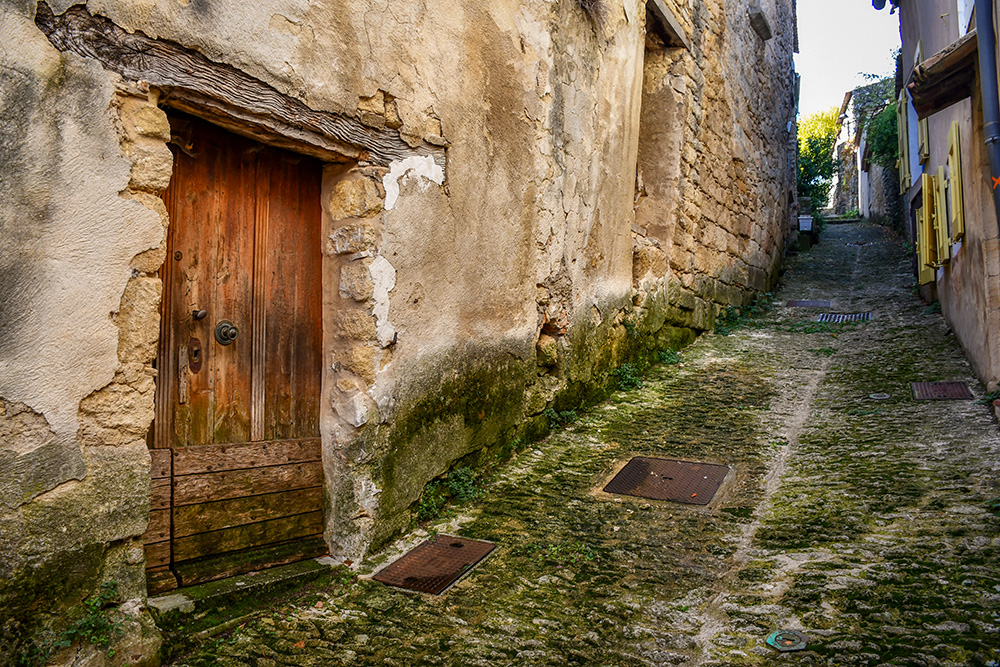
Old house in the Rue du Barry © French Moments
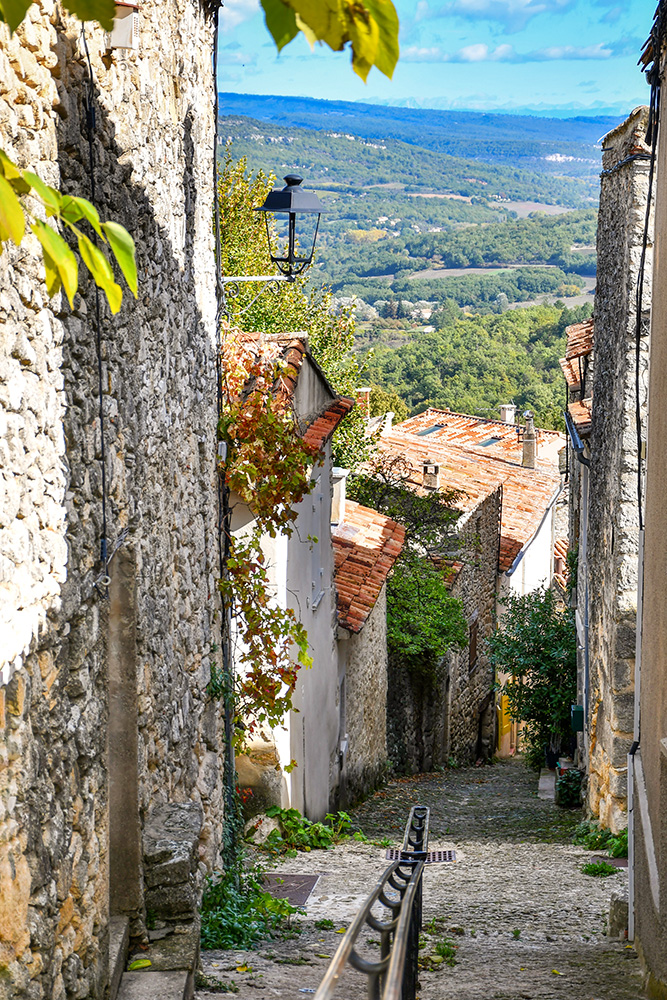
Rue du Barry © French Moments
The Sainte-Croix Church
This typically Provençal church combines a Romanesque chancel, a 14th-century nave with ribbed vaults, two barrel-vaulted side chapels and a Romanesque portal topped by an oculus.
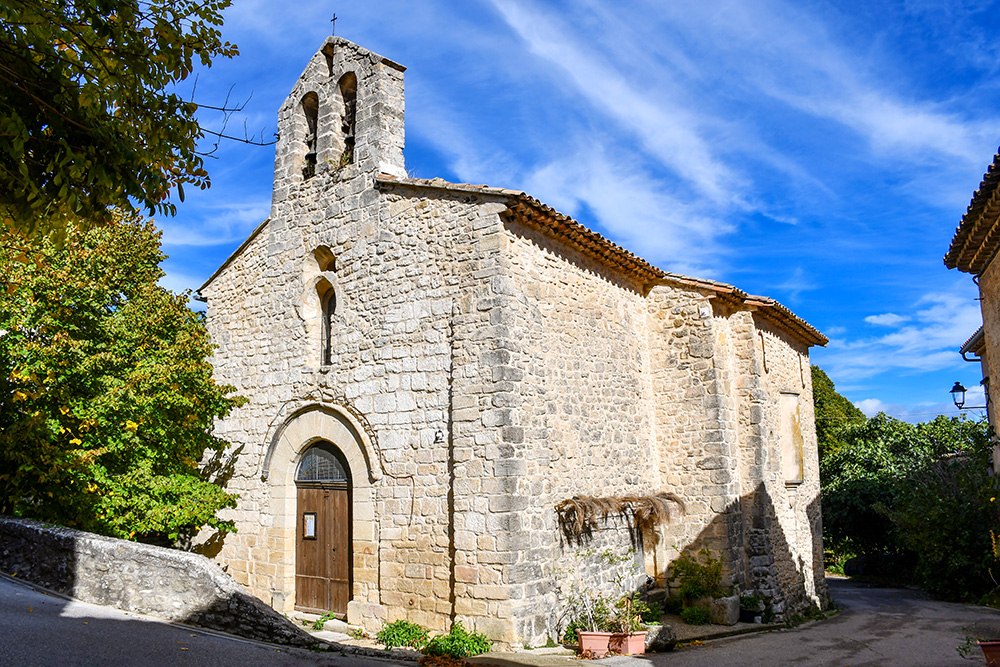
Sainte-Croix church © French Moments
The Sainte-Croix church was recently restored following soil movements that had weakened it.
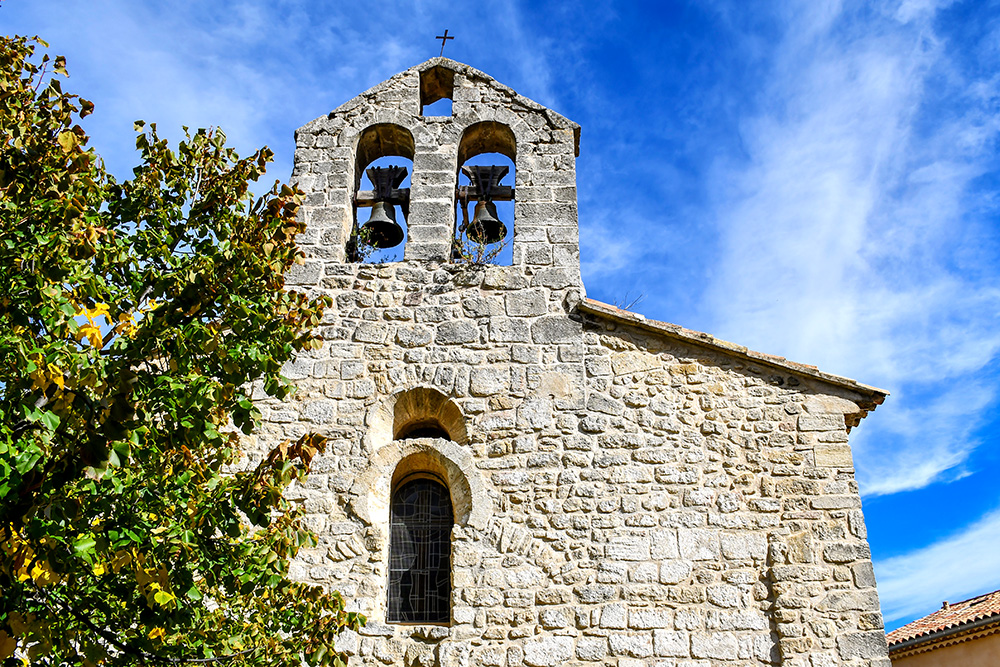
The campanile © French Moments
The fountain and wash house
The village's old washhouse-fountain is along the Rue de l'Ancienne Mairie, between the church and the town hall.
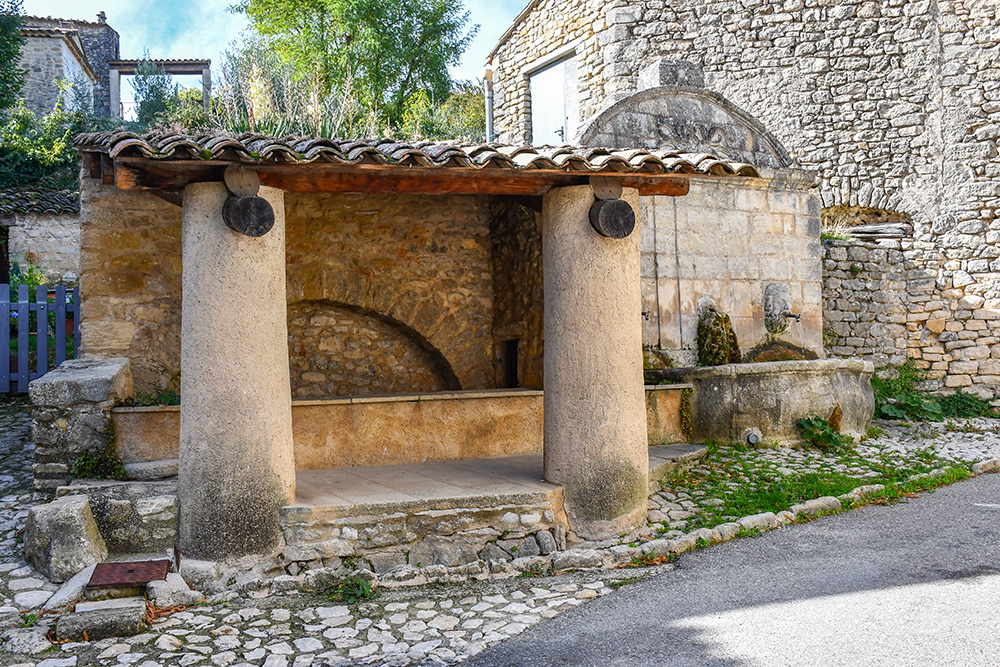
The fountain-wash house © French Moments
It dates back to 1772. Until around 1990, the fountain was decorated with faun heads. These have now been replaced by a man's mask and a woman's mask.
The fountain features a beautiful tympanum with interlacing leaves.
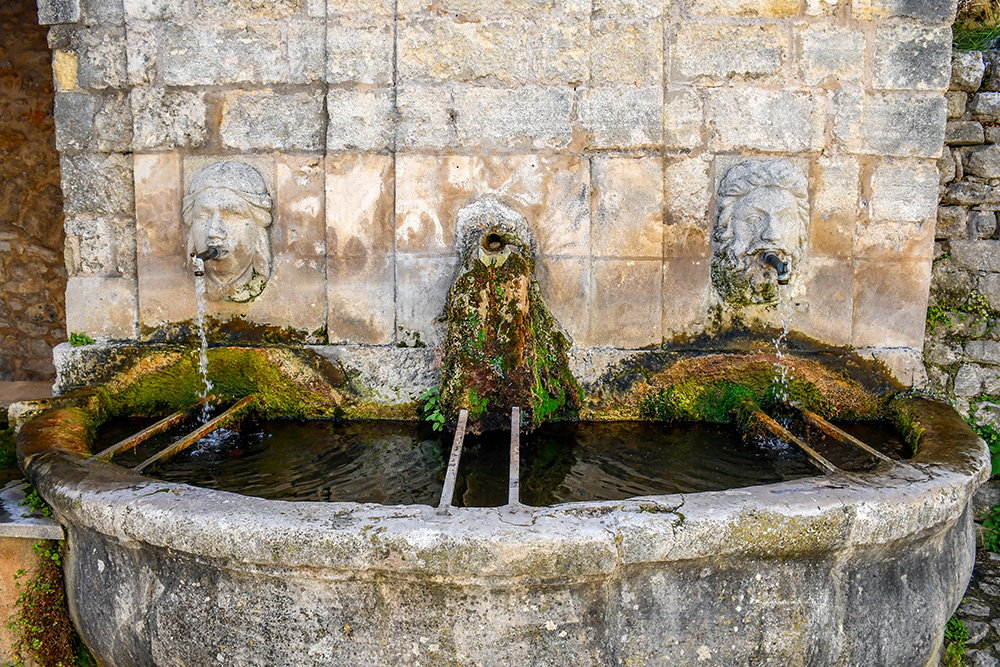
The masks of man and woman © French Moments
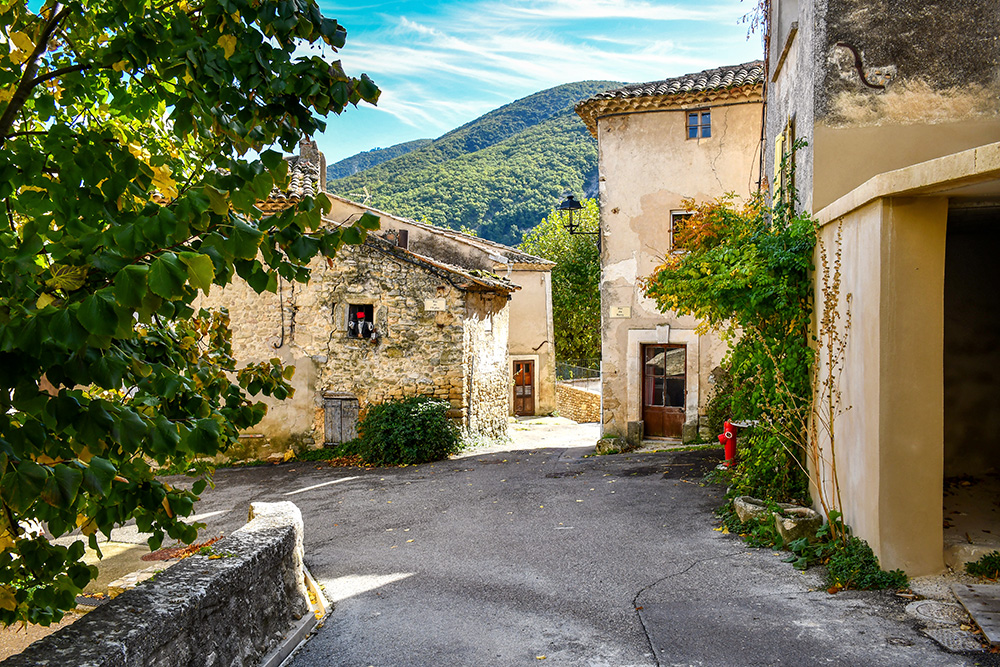
Rue de l'Ancienne Mairie © French Moments
Rue César Moulin
The Rue César Moulin leads into the heart of the old Provencal village. It is the gateway to the other picturesque streets of Castellet.
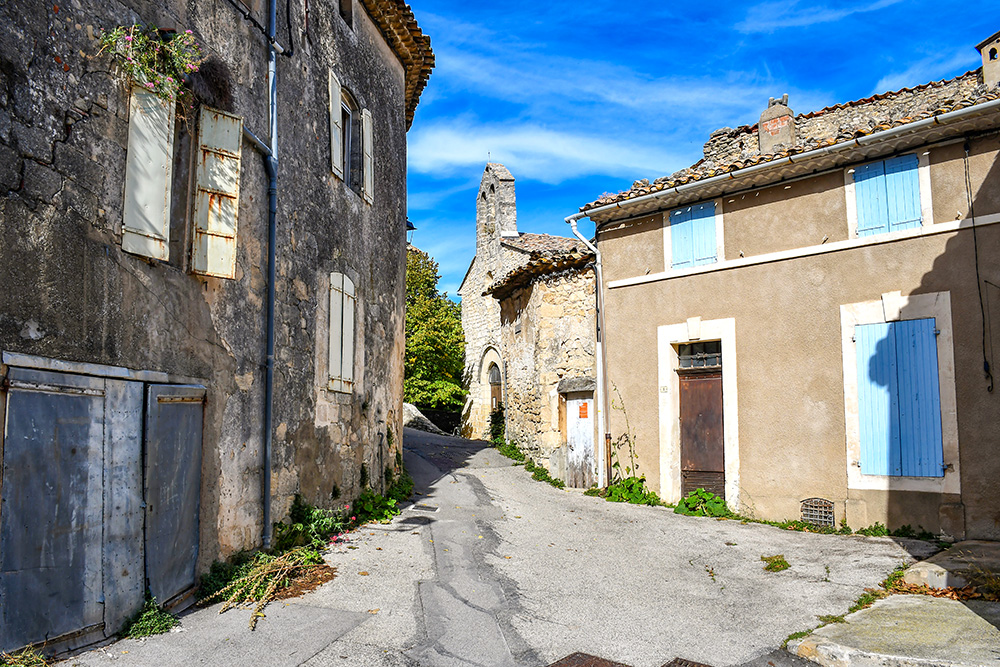
Rue César Moulin © French Moments
The street is named after the faïence maker, César Moulin. Thanks to him, Castellet experienced its moment of glory in the 17th century, establishing an art faïence factory that, it is said, furnished the table of the King of France. Pieces are still preserved at the Palace of Versailles. This activity continued until 1852.
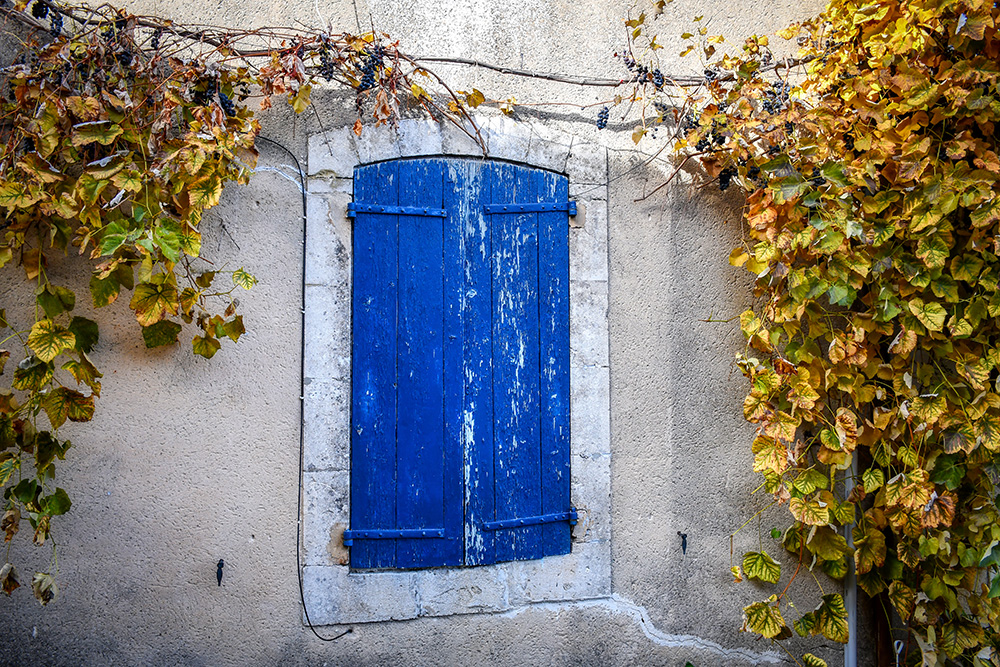
Window with blue shutters in the Rue César Moulin © French Moments
On the street is precisely the private mansion of César Moulin. It is the most beautiful house in the village.
The façade dates back to the 18th century and features a gendarme-hat doorway with an ornate door.
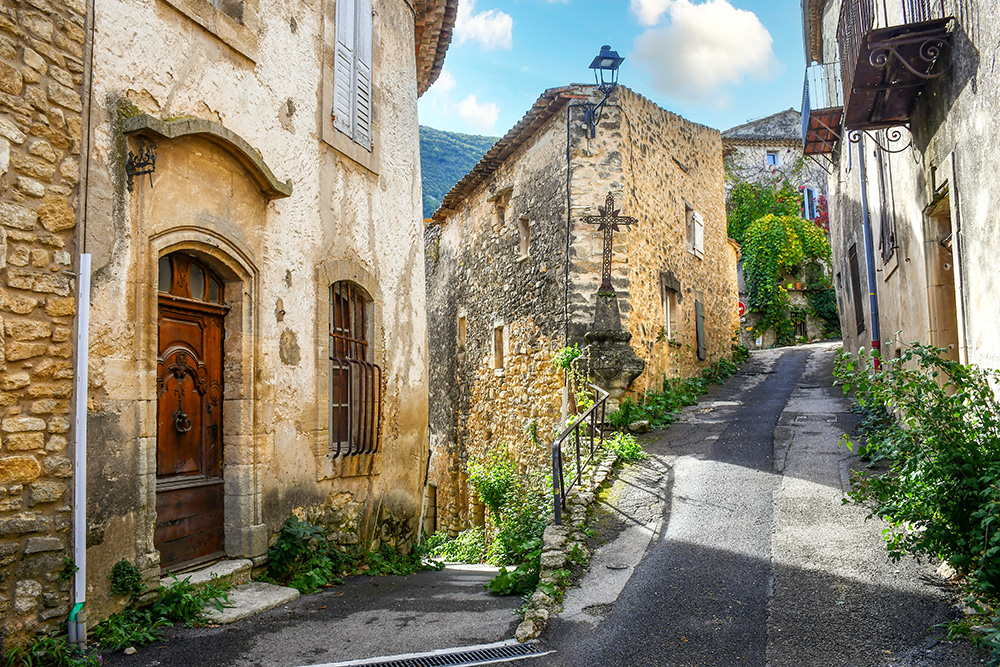
House of César Moulin © French Moments
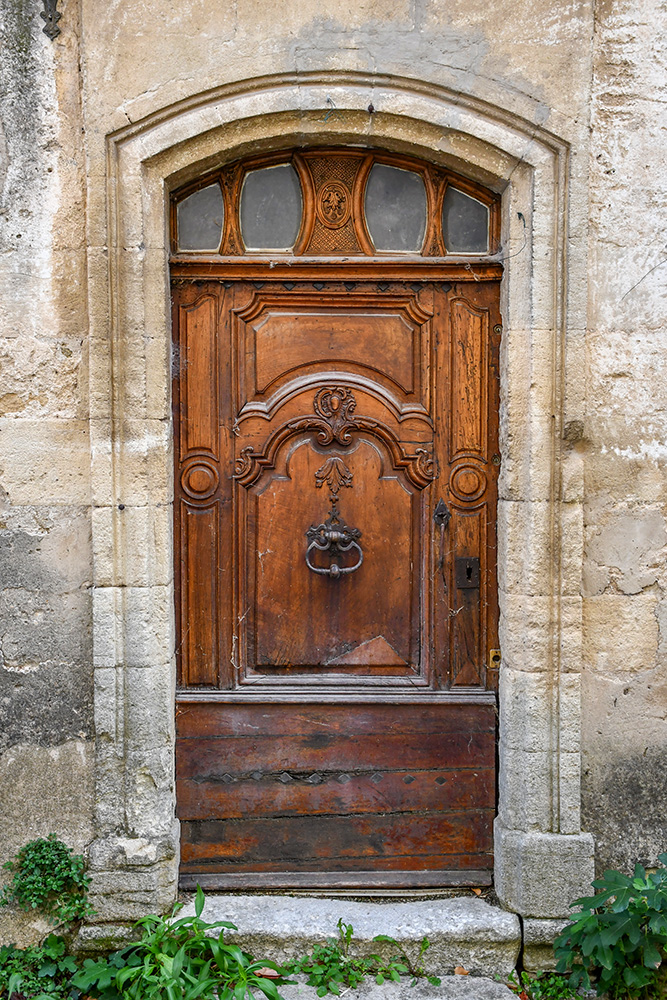
Ornate door of the César Moulin townhouse © French Moments
Next to the house is an 18th-century wrought-iron cross on a stone base.
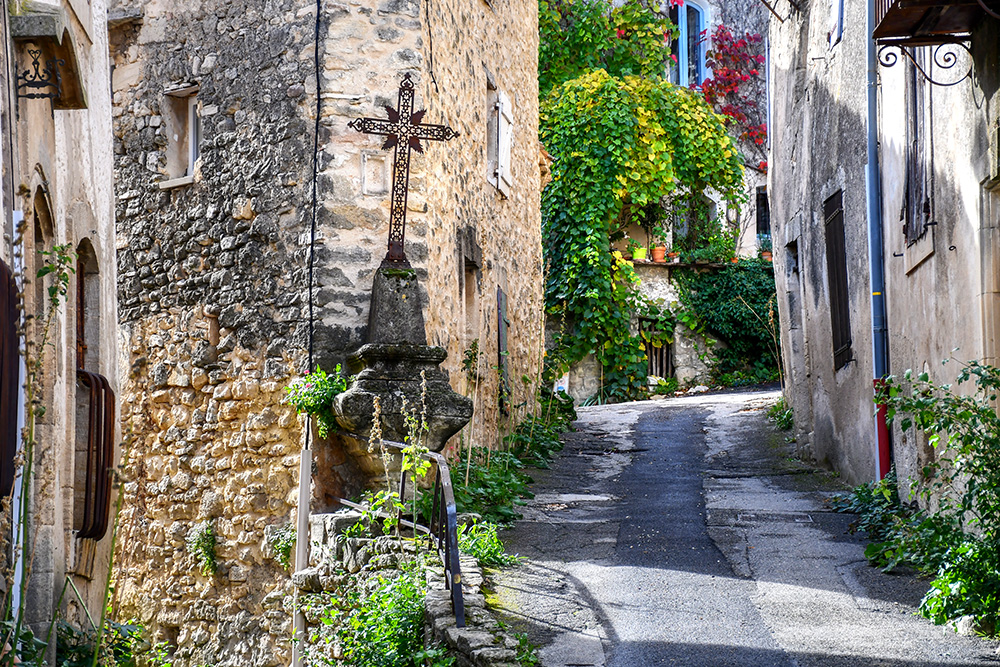
Wrough-iron cross from the 18th century © French Moments
Place de la Fontaine
The Rue César Moulin leads to the Place de la Fontaine, which, as its name suggests, features a very old fountain.
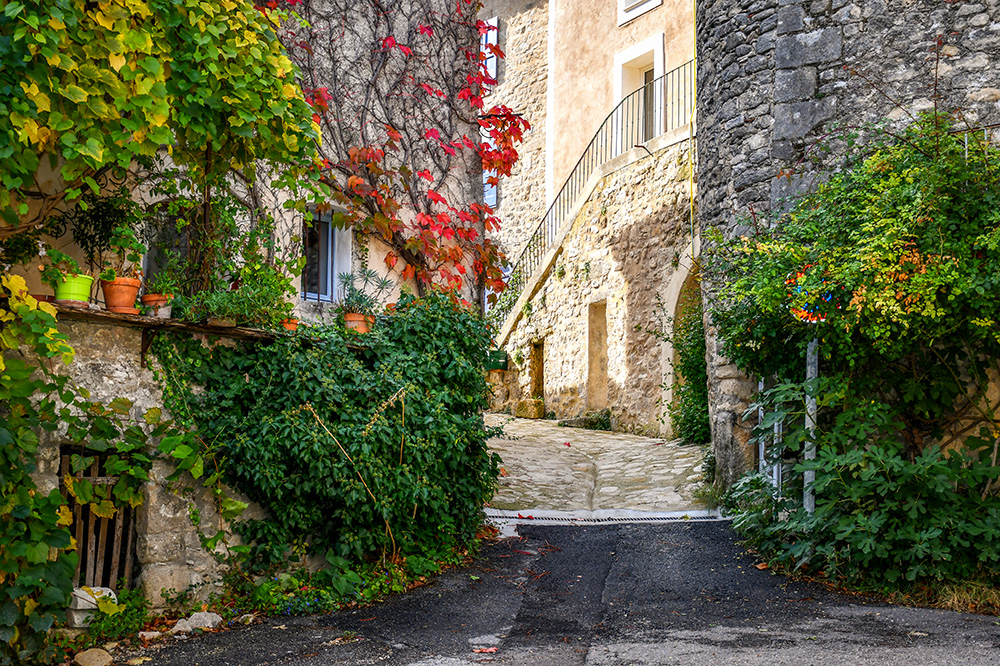
Place de la Fontaine © French Moments
The square gives access to the Rue de la Combe and Rue de la Chatterie.
Rue de la Combe
The Rue de la Combe joins the Chemin de la Combe, which leads to the summit of Mourre-Nègre.
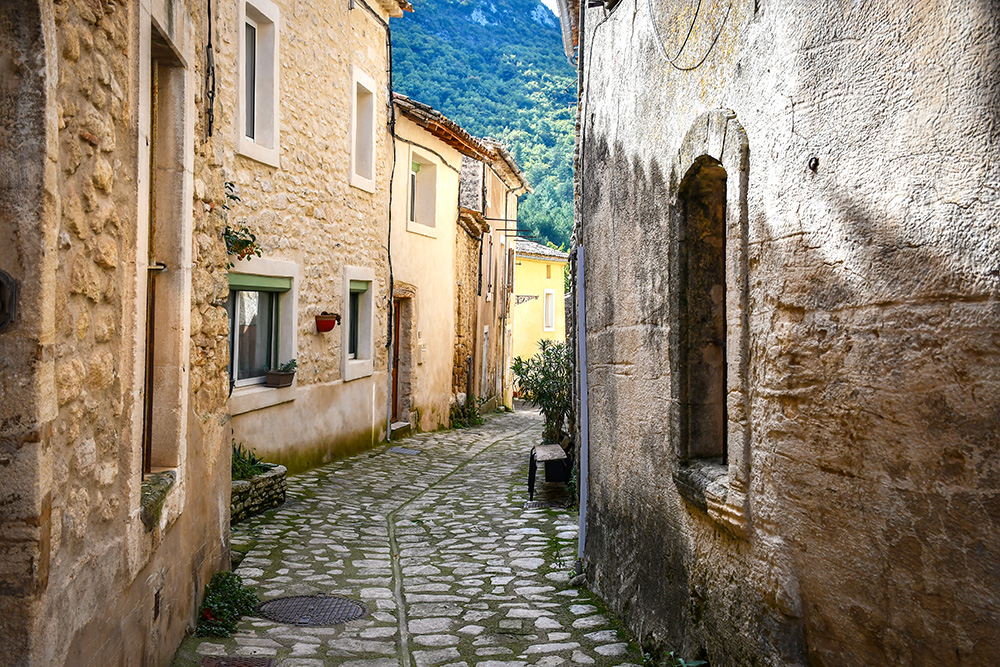
Rue de la Combe © French Moments
Rue de la Chatterie
To Rue de la Chatterie boasts a string of pretty old houses.

Rue de la Chatterie © French Moments
Rue Haute
We continued exploring the village by ascending the Rue Haute. It was there we encountered the postman making his mail round on foot (the streets are too narrow to accommodate his van) and cats in search of cuddles, mewing incessantly.
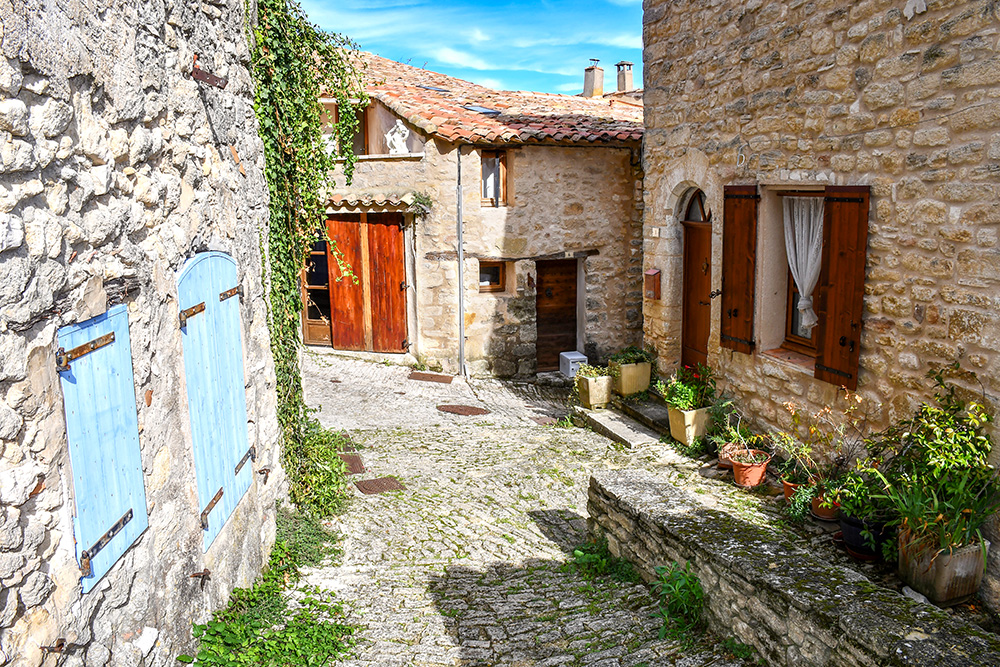
Rue Haute © French Moments
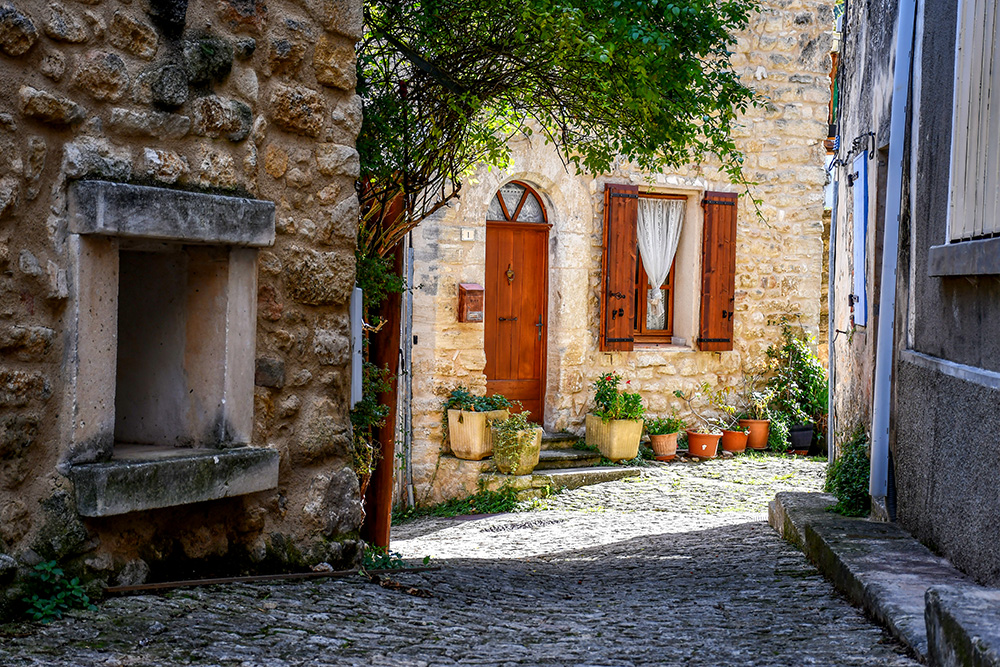
Rue Haute © French Moments

One of the cats in the Rue Haute © French Moments
Find out more
Here are some pages from our blog and other websites to find out more about this Provencal destination.
- Discover the hilltop villages of the Luberon
- Explore the neighbouring village of Ménerbes
- Find out more about Provence-Alpes-Côte d'Azur
- The official tourist office of the area
Where to stay near Castellet-en-Luberon
Castellet-en-Luberon is part of the region of Apt which has a high capacity for holiday accommodation. The region has hotels, bed and breakfasts (covering all price ranges), estate agencies offering seasonal rentals and gîtes.
Click here to book your accommodation in the Luberon near Apt or browse the map below:
What to do in the Luberon
Be inspired by a list of things to do in the Luberon:
Pin Castellet-en-Luberon on Pinterest





